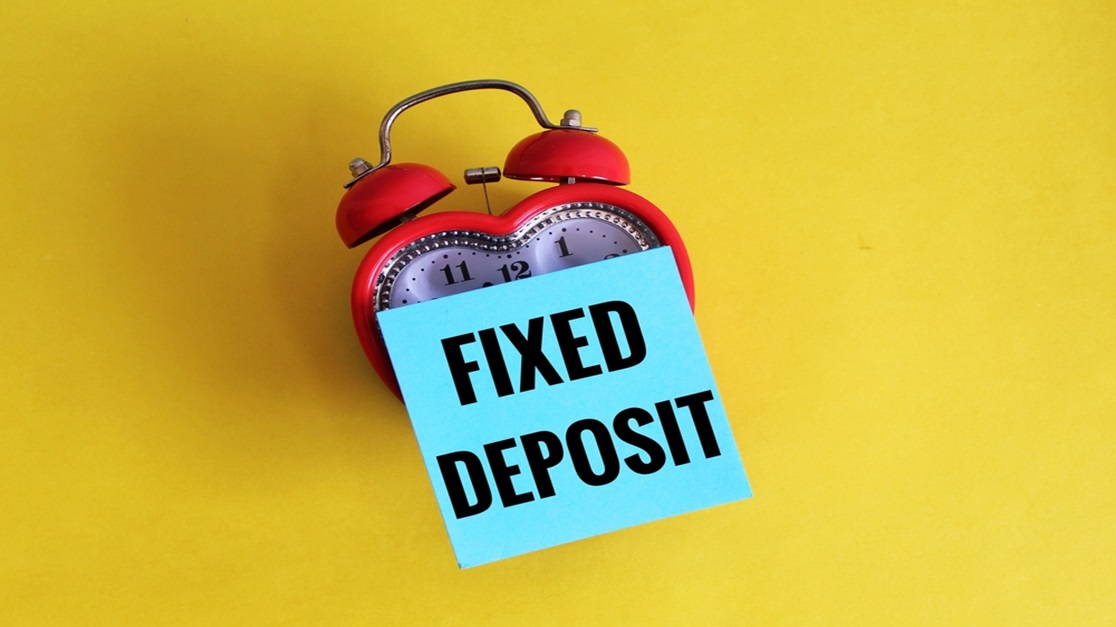Fixed Deposit Transfer: Process and Implications
September 10, 2025

Transferring a Fixed Deposit (FD) from one bank to another can be a strategic financial move. Whether you're seeking better interest rates, improved banking services, or more favourable terms, transferring your FD requires careful planning to ensure that you maximise benefits. To set things right, FDs don't work like a balance transfer, where you can transfer your loan from one account to another. However, to get better rates, you can open a new FD with another bank like Ujjivan SFB.
Understanding Your Current FD Terms
Are you planning to close your current FD and open a new one with another bank? Before initiating the move, it's crucial to review the terms and conditions of your current FD. Take note of the maturity date, interest rate, and any penalties for premature withdrawal.
Example:
You have a fixed deposit of ₹5 lakhs with Bank A at an interest rate of 7% p.a. The maturity date is three years from now. If you decide to withdraw it prematurely after two years, Bank A charges a penalty of 1% on the interest earned. Additionally, this 1% penalty would be levied on the prevailing 2-year interest rate and not 3 years, which could further diminish your returns.
Point to note: The above example is for illustration purpose only. For latest FD rates, kindly visit our interest rates section. Ujjivan doesn't charge any premature withdrawal fee for withdrawals made after 6 months from the time of deposit.
Comparing New FD Options
Researching and comparing FD offerings from various banks is essential when considering a transfer. Pay attention to factors such as tenure, minimum deposit amounts, and any special schemes offered by the new bank. Check Ujjivan SFB's offerings here.
Open Your FD Account with the New Bank
Submit the required documentation to your new bank for KYC. With Digital Fixed Deposits, you can complete your Video KYC from the comfort of your home. However, ensure your mobile number is linked to Aadhaar; it's a pre-requisite for Video KYC. The OTP will be sent to your registered mobile number.
How can I calculate the penalty for premature withdrawal of my FD?
The premature FD withdrawal penalty fee varies across banks. Usually, it's 1% of the interest rate pertaining to the tenure. To know more about premature withdrawal fees and charges, read this blog.
Final Thoughts
Opening a fixed deposit with a new bank can be a valuable way to enhance your returns and take advantage of better banking opportunities. By following these steps, you can ensure a smooth transition and optimise the benefits of your investment.
Looking to grow your savings faster? Ujjivan SFB offers a wide range of fixed deposit products. Select the FD of your choice and take a step forward to your financial goals. Alternatively, you can browse through Ujjivan SFB product suite - our wide range of financial products are designed to make your financial life better.
Disclaimer:
The contents herein are only for informational purposes and generic in nature. The content does not amount to an offer, invitation or solicitation of any kind to buy or sell, and are not intended to create any legal rights or obligations. This information is subject to updation, completion, amendment and verification without notice. The contents herein are also subject to other product-specific terms and conditions, as well as any applicable third-party terms and conditions, for which Ujjivan Small Finance Bank assumes no responsibility or liability.
Nothing contained herein is intended to constitute financial, investment, legal, tax, or any other professional advice or opinion. Please obtain professional advice before making investment or any other decisions. Any investment decisions that may be made by the you shall be at your own sole discretion, independent analysis and evaluation of the risks involved. The use of any information set out in this document is entirely at the user’s own risk. Ujjivan Small Finance Bank Limited makes no representation or warranty, express or implied, as to the accuracy and completeness for any information herein. The Bank disclaims any and all liability for any loss or damage (direct, indirect, consequential, or otherwise) incurred by you due to use of or due to investment, product application decisions made by you on the basis of the contents herein. While the information is prepared in good faith from sources deemed reliable (including public sources), the Bank disclaims any liability with respect to accuracy of information or any error or omission or any loss or damage incurred by anyone in reliance on the contents herein, in any manner whatsoever.
To know more about Ujjivan Small Finance Bank Products Visit:"https://www.ujjivansfb.in"
All intellectual property rights, including copyrights, trademarks, and other proprietary rights, pertaining to the content and materials displayed herein, belong
to Ujjivan Small Finance Bank Limited or its licensors. Unauthorised use or misuse of any intellectual property, or other content displayed herein is strictly prohibited and the same is not intended for distribution to, or use by, any person in any jurisdiction where such distribution or use would (by reason of that person’s nationality, residence or otherwise) be contrary to law or registration or would subject Ujjivan Small Finance Bank Limited or its affiliates to any licensing or registration requirements.
FAQs
1. How does transferring an FD affect tax implications?
Closing and opening an FD does not impact the tax implications associated with it. That said, you cannot close a non-callable FD before the maturity date.
2. Are there any charges for closing a fixed deposit?
Banks may charge certain fees or penalties for premature closure of an FD.
3. Can I transfer an FD from one branch of the same bank to another?
Please contact your bank for more details regarding the inter-bank transfer procedure or if it's allowed or not.
4. Will I lose interest if I withdraw my fixed deposit before maturity?
Transferring an FD entails early FD withdrawal, which may attract penalties or reduced interest rates, depending on the terms and conditions of your current FD.
4. Can I transfer my fixed deposit partially?
You would need to close your existing FD and open a new one with the desired amount in the new bank.
Latest Blogs

How to Link PAN with Aadhaar: Step-by-Step Guide & Consequences of Not Linking
Linking your Permanent Account Number (PAN) with your Aadhaar is no longer just a best practice.

Annual Information Statement (AIS): A Complete Guide for Stress-Free ITR Filing
India’s tax season is in its final stretch.

ITR-1 (Sahaj) Restrictions: Income Sources Not Allowed & Filing Rules
With just a few days left before the 15 September 2025 deadline for filing Income Tax Returns (ITRs) for Assessment Year (AY) 2025-26, many taxpayers are rushing to submit their forms online.

GST Rate Cut on Electronics: What It Means for Consumers and Retailers
India’s Goods and Services Tax (GST) system has entered a new era with the rollout of GST 2.0, effective from September 22, 2025.

Banking Safety Guide: How to Avoid QR Code Frauds While Making Payments
India’s love for QR code payments has made transactions lightning-fast, but also opened a new front for cybercriminals.





